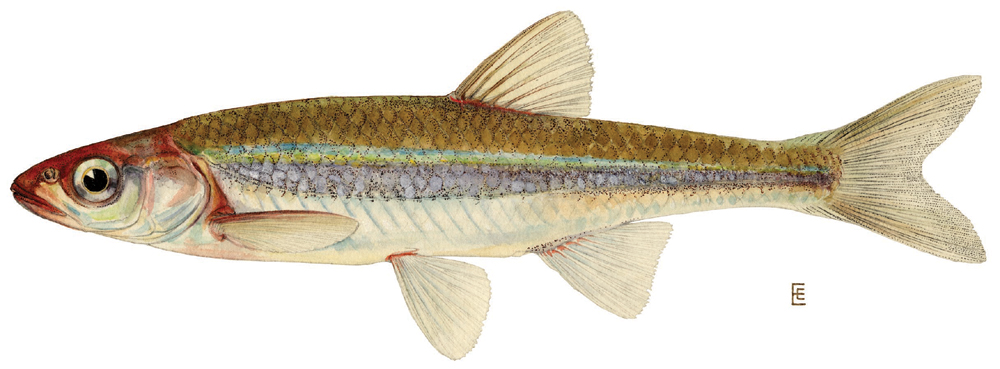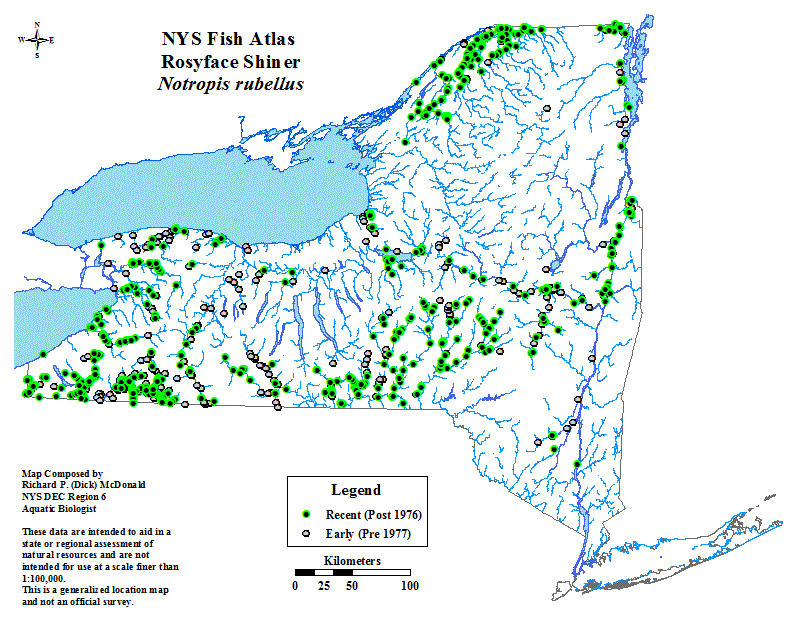
Rosyface Shiner (Notropis rubellus)
The rosyface is widespread from Manitoba and Minnesota to the St. Lawrence drainage in Quebec and New York, south to the James River on the Atlantic coast and the Tennessee River west of the Appalachians. It also occurs in the Ozarks and in the Ouachita River in Arkansas. In New York, it is in all major drainages except the Delaware, but it is not found in the Adirondacks.
The rosyface occurs in the swifter parts of large- and moderate-sized streams, less frequently in smaller creeks.
The life history of the rosyface shiner was studied near Allegany, New York, in Five Mile Creek, about 200 yards above its confluence with the Allegheny River. Spawning took place on a riffle at the head of a pool. Prespawning activities consisted of schools including both sexes circling between two pools below the spawning riffles. The front of the school was mostly females, the rear mostly males. Spawning took place between 23 and 28 June when the water temperature was 76 to 84 F.The spawning area was over gravel bottom in the lower part of a riffle where the water was 1 to 3 inches deep and the stones were 0.5 to 5 inches in diameter. Depressions 5 to 12 inches in diameter served as nests. A school of fish near the site suddenly rushed into the area, breaking the surface and thrashing about. Spawning occurred in groups of 8 to 12 individuals, the fish vibrating together over a depression for 5 or 6 seconds, then remaining quiet for 30 seconds or so, and repeating the cycle for about 5 minutes before returning to the pool. After 10 minutes, the school again moved into the riffle and repeated the process.
One-year-old females averaged 600 eggs and 3- year-olds averaged 1,175. The maximum age was 3 years. Both sexes matured at age 1. Males grow faster the first year; females grow faster during the second and third years.
Aquatic and terrestrial insects made up 91% of the diet.
Distribution of the rosyface shiner in NY state.
A 141 KB image of the rosyface shiner is also available for download.
The above species description was taken out of "The Inland Fishes of New York State" by C. Lavett Smith, published by the New York State Department of Environmental Conservation, 1985.
